BLOG - Page 44
Deprecated: strtolower(): Passing null to parameter #1 ($string) of type string is deprecated in /var/www/vhosts/moontrix.com/essenthouse.com/_blog.php on line 99
Recently created mixtures:

Sea-Buckthorn Macerated oil
February 7, 2019

Home made air freshener
June 29, 2016

Homemade Dog-rose distillate
June 28, 2016

Homemade jasmine distillate
June 22, 2016

Moxibustion treatment with Moxa stick
May 30, 2016

Face and body gentle oil cleanser
May 26, 2016
BLOG / LATEST ADDITIONS!
Walnut Oil (Juglans Regia) ☸ Base oils ☸ Base / General
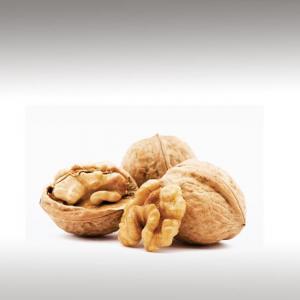

The Walnut tree originated from a large area going from Central Asia down to the Indian Peninsula and spread westwards to Europe and eastwards to China. Walnut, the fruit of the walnut tree (Juglans Regia), has been used in human nutrition since ancient times and walnut trees were cultivated in Europe as early as 1000 BC.
The Walnut tree is a deciduous medium-sized to tall tree that can reach up to 45 m. The fruit is spherical drupe with a green fleshy husk that opens at maturity to reveal a nut. The nut consists of a hard lignified shell containing a wrinkled kernel made up of two halves separated by a partition.
Unrefined Walnut oil is made from nuts that are dried and then cold-pressed. Good quality Walnut oil is topaz in colour with a rich nutty taste. Walnut oil is oil extracted from English Walnuts (also known as Persian Walnuts). Most Walnut oil is produced in France, though there are also producers in Australia, New Zealand and California. Walnut trees have been cultivated in Europe since Roman times for both culinary and cosmetic uses.
Walnut oil was one of the most important oils used by Renaissance painters. Its short drying time and lack of yellow tint make it a good oil paint base thinner and brush cleaner.
Chemical structure:
Walnuts are rich in phytonutrients and are an excellent source of selenium, phosphorous, magnesium, zinc, iron, and calcium.
The Walnut tree is a deciduous medium-sized to tall tree that can reach up to 45 m. The fruit is spherical drupe with a green fleshy husk that opens at maturity to reveal a nut. The nut consists of a hard lignified shell containing a wrinkled kernel made up of two halves separated by a partition.
Unrefined Walnut oil is made from nuts that are dried and then cold-pressed. Good quality Walnut oil is topaz in colour with a rich nutty taste. Walnut oil is oil extracted from English Walnuts (also known as Persian Walnuts). Most Walnut oil is produced in France, though there are also producers in Australia, New Zealand and California. Walnut trees have been cultivated in Europe since Roman times for both culinary and cosmetic uses.
Walnut oil was one of the most important oils used by Renaissance painters. Its short drying time and lack of yellow tint make it a good oil paint base thinner and brush cleaner.
Chemical structure:
Walnuts are rich in phytonutrients and are an excellent source of selenium, phosphorous, magnesium, zinc, iron, and calcium.
Walnuts and Walnut oil provide hefty levels of Vitamins B-1, B-2, and B-3, coupled with Vitamin-E and niacin.
It is about 22,2% monosaturated oleic acid, an omega-9 fatty acid, 52,9% linoleic acid, an essential polyunsaturated omega-6 fatty acid, and 10,4% alpha linolenic acid, which supplies the body with needed omega-3 fatty acids, another form of polyunsaturated fatty acid essential to human nutrition.
It is about 22,2% monosaturated oleic acid, an omega-9 fatty acid, 52,9% linoleic acid, an essential polyunsaturated omega-6 fatty acid, and 10,4% alpha linolenic acid, which supplies the body with needed omega-3 fatty acids, another form of polyunsaturated fatty acid essential to human nutrition.
Submitted by OperaDreamhouse (March 31, 2014)
Jojoba Oil (Simmondsia Chinensis) ☸ Base oils ☸ Base / General
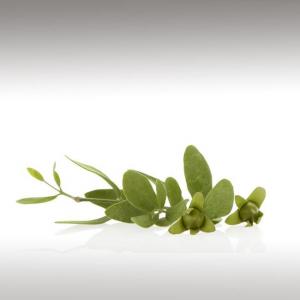

Jojoba oil is the liquid produced in the seed of the Simmondsia Chinensis (Jojoba) plant, a shrub, which is native to southern Arizona, southern California, and northwestern Mexico. Theoil makes up approximately 50% of the Jojoba seed by weight. Jojoba oil is obtained by “pressing” the Jojoba seeds.
Jojoba (Simmondsia Chinensis) is generally classified as non-toxic or harmful.
Legend has it that the Native Americans used Jojoba oil for a variety of purposes, ranging from hair conditioners, to skin lubricants to even making coffee-like beverages.
Unrefined Jojoba oil appears as a clear golden liquid at room temperature with a slightly nutty odor.
An equal number of male and female flowers are borne on separate plants. The plant can withstand extreme daily fluctuations of temperature and thrives in well-drained, desert soils and coarse mixtures of gravel and clay. The mature plant produces about 5 to 10 pounds of seeds, which range in size between the Coffee bean and Peanut. It is an important forage plant for desert bighorn sheep and mule deer.
Jojoba oil is derived from the seeds (beans) within the fruits. This oil, classified as a wax, is easily absorbed by the skin.
Thefemale variety of the plant produces a fruit, which in turn bears a seed containing a liquid Wax. This oily Wax is similar to vegetable oil, and is considered “unusually purea": it contains essentially all-wax esters, Vitamin E, andphospholipids. It also has an incredibly long shelf life.
Very stable - Jojoba oil does not become rancid or lose antioxidants even after long periods of storage. The melting point of Jojoba oil is approximately 10°C and the iodine value is approximately 80. Jojoba oil is relatively shelf-stable when compared with other vegetable oils mainly because it does not contain triglycerides, unlike most other vegetable oils such as Grape Seed oil and Coconut oil. It has an oxidative stability index of approximately 60, which means that it is more shelf-stable than Safflower oil, Canola oil, Almond oil or Squalene but less than Castor oil and Coconut oil.
Jojoba oil is used as a replacement for Whale oil and its derivatives, such as cetyl alcohol. The ban on importing whale oil to the US in 1971 led to the discovery that Jojoba oil is "in many regards superior to Sperm oil for applications in the cosmetics and other industries".
Jojoba (Simmondsia Chinensis) is generally classified as non-toxic or harmful.
Jojoba oil have light to medium, distinct but pleasant aroma and thisoil is golden yellow in color.
Jojoba (Simmondsia Chinensis) is generally classified as non-toxic or harmful.
Legend has it that the Native Americans used Jojoba oil for a variety of purposes, ranging from hair conditioners, to skin lubricants to even making coffee-like beverages.
Unrefined Jojoba oil appears as a clear golden liquid at room temperature with a slightly nutty odor.
An equal number of male and female flowers are borne on separate plants. The plant can withstand extreme daily fluctuations of temperature and thrives in well-drained, desert soils and coarse mixtures of gravel and clay. The mature plant produces about 5 to 10 pounds of seeds, which range in size between the Coffee bean and Peanut. It is an important forage plant for desert bighorn sheep and mule deer.
Jojoba oil is derived from the seeds (beans) within the fruits. This oil, classified as a wax, is easily absorbed by the skin.
Thefemale variety of the plant produces a fruit, which in turn bears a seed containing a liquid Wax. This oily Wax is similar to vegetable oil, and is considered “unusually purea": it contains essentially all-wax esters, Vitamin E, andphospholipids. It also has an incredibly long shelf life.
Very stable - Jojoba oil does not become rancid or lose antioxidants even after long periods of storage. The melting point of Jojoba oil is approximately 10°C and the iodine value is approximately 80. Jojoba oil is relatively shelf-stable when compared with other vegetable oils mainly because it does not contain triglycerides, unlike most other vegetable oils such as Grape Seed oil and Coconut oil. It has an oxidative stability index of approximately 60, which means that it is more shelf-stable than Safflower oil, Canola oil, Almond oil or Squalene but less than Castor oil and Coconut oil.
Jojoba oil is used as a replacement for Whale oil and its derivatives, such as cetyl alcohol. The ban on importing whale oil to the US in 1971 led to the discovery that Jojoba oil is "in many regards superior to Sperm oil for applications in the cosmetics and other industries".
Jojoba (Simmondsia Chinensis) is generally classified as non-toxic or harmful.
Jojoba oil have light to medium, distinct but pleasant aroma and thisoil is golden yellow in color.
Submitted by OperaDreamhouse (March 31, 2014)
Jojoba Oil (Simmondsia Chinensis) ☸ Base oils ☸ Beauty / Cosmetics


Good for all skin types ( very good for acne, dry and aging skin tipes)
Jojoba oil few of many qualities for skin are reducingwrinklesand lightening skin marks, scars and stretch marks. For actual skin ailments such as acne, inflammation of the skin, Jojoba oil is very useful because it balances properties of the skin and moisturizes it naturally with its Sebum oil which is identical to Sebum oil produced by human skin.
In particular, such products commonly containing Jojoba are lotions and moisturizers, hair shampoos and conditioners. Or, the pure oil itself may be used on skin, hair, or cuticles.
Jojoba oil has many qualities in helping the skin cells reserve and retain moisture. It is very gentle and so it suits all types of skin even the most sensitive. It can effectively penetrate the skin easily to improve flexibility and elasticity.
Jojoba oil is useful for many conditions: it is useful for treating both excessive sebum production (oily skin and/or acne) because it can dissolve the Sebum, as well as underproduction, such as dry skin, dandruff or other dry skin conditions like eczema and psoriasis.
Simmondsia Chinensis a good emollient choice for use in cosmetics and is suitable for dry, sensitve, and acne-prone skin types.
Jojoba oil is great for all hair types. Conversely, it can also be used to remove excess Sebum and product buildup on hair. It is also used topically to encourage the regrowth of hair in people who are balding.
This oil acts as a natural anti-inflammatory and is a good choice for use in massage and for inflamed skin. It has a nourishing properties also.
Since Jojoba oil is not an eye irritant, nor allergenic, you can use it to remove eye makeup. It also easily removes foundation, blush, and lipstick.
Jojoba oil good for:
Massage oil
After-sun moisturizer
Stretch mark treatment
Sebum substitute
As a way to remove hair product residue
Cleanser
Treating acne and cold sores
Scalp and hair moisturizer
Hair detangler
As a nightly facial moisturizer
As an after-shower body moisturizer
As makeup remover
As a lip balm
As dried cuticle treatment
As a shaving prepper.
Jojoba oil few of many qualities for skin are reducingwrinklesand lightening skin marks, scars and stretch marks. For actual skin ailments such as acne, inflammation of the skin, Jojoba oil is very useful because it balances properties of the skin and moisturizes it naturally with its Sebum oil which is identical to Sebum oil produced by human skin.
In particular, such products commonly containing Jojoba are lotions and moisturizers, hair shampoos and conditioners. Or, the pure oil itself may be used on skin, hair, or cuticles.
Jojoba oil has many qualities in helping the skin cells reserve and retain moisture. It is very gentle and so it suits all types of skin even the most sensitive. It can effectively penetrate the skin easily to improve flexibility and elasticity.
Jojoba oil is useful for many conditions: it is useful for treating both excessive sebum production (oily skin and/or acne) because it can dissolve the Sebum, as well as underproduction, such as dry skin, dandruff or other dry skin conditions like eczema and psoriasis.
Simmondsia Chinensis a good emollient choice for use in cosmetics and is suitable for dry, sensitve, and acne-prone skin types.
Jojoba oil is great for all hair types. Conversely, it can also be used to remove excess Sebum and product buildup on hair. It is also used topically to encourage the regrowth of hair in people who are balding.
This oil acts as a natural anti-inflammatory and is a good choice for use in massage and for inflamed skin. It has a nourishing properties also.
Since Jojoba oil is not an eye irritant, nor allergenic, you can use it to remove eye makeup. It also easily removes foundation, blush, and lipstick.
Jojoba oil good for:
Massage oil
After-sun moisturizer
Stretch mark treatment
Sebum substitute
As a way to remove hair product residue
Cleanser
Treating acne and cold sores
Scalp and hair moisturizer
Hair detangler
As a nightly facial moisturizer
As an after-shower body moisturizer
As makeup remover
As a lip balm
As dried cuticle treatment
As a shaving prepper.
Submitted by OperaDreamhouse (March 31, 2014)
Sunflower Oil (Helianthus Annuus) ☸ Base oils ☸ Base / General
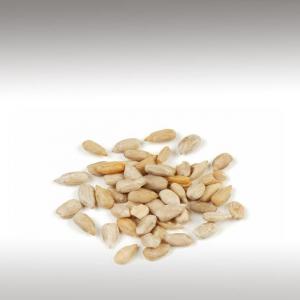

Sunflower has been cultivated by Native Americans for centuries. They used the plant for dietary, medicinal, and decorative purposes. Helianthus Annuus Seed oil is the oil expressed from the seeds of the Sunflower, Helianthus Annuus, Compositae.
Sunflower seed oil comes from Sunflower seeds. The Sunflower is extracted using a cold press expeller method, which is essentially squeezing raw materials under high pressure until all the oily goodness is squished out.
Sunflower oil was first industrially produced in 1835 in the Russian Empire. The world's largest Sunflower oil producers now are Ukraine, Russia and Argentina.
It is a relatively lightweight oil that is best obtained through the cold press processing of Sunflower seeds.
Chemical structure:
Sunflower oil is light in taste and appearance and supplies more Vitamin E than any other vegetable oil. It is a combination of monounsaturated and polyunsaturated fats with low saturated fatlevels. The oil contains appreciable quantities of Vitamin E, sterols, Squalene, and other aliphatic hydrocarbons, terpene andmethyl ketones (chiefly methyl nonyl ketone).
Sunflower oil is a monounsaturated / polyunsaturated mixture of mostly oleic acid (omega - 9), linoleic acid (omega-6) group of oils. The oil content of the seed ranges from 22 to 36% (average, 28%): the kernel contains 45 - 55% oil.
Sunflower oil also contains lecithin, tocopherols, carotenoids and waxes. Sunflower oil's properties are typical of a vegetable triglyceride oil. Sunflower oil is produced from oil type Sunflower seeds. Sunflower oil is light in taste and appearance.
Palmitic acid (saturated): 5%
Stearic acid (saturated): 6%
Oleic acid (monounsaturated omega - 9): 30%
Linoleic acid (polyunsaturated omega - 6): 59%
Sunflower seed oil comes from Sunflower seeds. The Sunflower is extracted using a cold press expeller method, which is essentially squeezing raw materials under high pressure until all the oily goodness is squished out.
Sunflower oil was first industrially produced in 1835 in the Russian Empire. The world's largest Sunflower oil producers now are Ukraine, Russia and Argentina.
It is a relatively lightweight oil that is best obtained through the cold press processing of Sunflower seeds.
Chemical structure:
Sunflower oil is light in taste and appearance and supplies more Vitamin E than any other vegetable oil. It is a combination of monounsaturated and polyunsaturated fats with low saturated fatlevels. The oil contains appreciable quantities of Vitamin E, sterols, Squalene, and other aliphatic hydrocarbons, terpene andmethyl ketones (chiefly methyl nonyl ketone).
Sunflower oil is a monounsaturated / polyunsaturated mixture of mostly oleic acid (omega - 9), linoleic acid (omega-6) group of oils. The oil content of the seed ranges from 22 to 36% (average, 28%): the kernel contains 45 - 55% oil.
Sunflower oil also contains lecithin, tocopherols, carotenoids and waxes. Sunflower oil's properties are typical of a vegetable triglyceride oil. Sunflower oil is produced from oil type Sunflower seeds. Sunflower oil is light in taste and appearance.
Palmitic acid (saturated): 5%
Stearic acid (saturated): 6%
Oleic acid (monounsaturated omega - 9): 30%
Linoleic acid (polyunsaturated omega - 6): 59%
Submitted by OperaDreamhouse (March 28, 2014)
Ghassoul (Rhassoul) Clay ☸ Ingredients ☸ Base / General
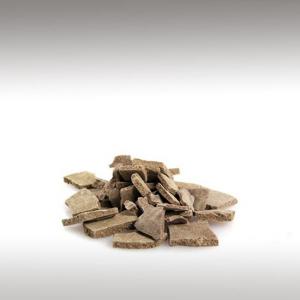

The Rhassoul or Ghassoul is a natural mineral clay mined in the Atlas
Mountains of Morocco since the eighth century. It is combined with water
to clean the body and has been used by Moroccan women for centuries to
care for their skin and hair. Rhassoul contains silicon, iron, magnesium, potassium, sodium, lithium and trace elements.
Today, Rhassoul is used in Turkish baths. Along with a glove, or "Kessa", Rhassoul is used as a facial mask and poultice to the body. It is similar to a western style mud wrap. It is intended to soften the skin, reduce sebum secretion, regenerate the skin by removing dead cells, and rebalance the skin by tightening the pores.
Today, Rhassoul is used in Turkish baths. Along with a glove, or "Kessa", Rhassoul is used as a facial mask and poultice to the body. It is similar to a western style mud wrap. It is intended to soften the skin, reduce sebum secretion, regenerate the skin by removing dead cells, and rebalance the skin by tightening the pores.
Submitted by OperaDreamhouse (March 14, 2014)
Aloe Vera (Aloe Barbadensis) ☸ Ingredients ☸ Base / General
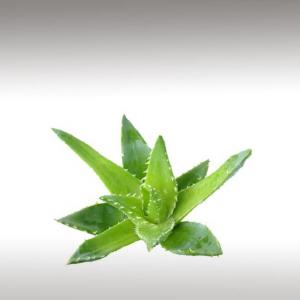

Aloe Vera is a succulent plant species that is found only in cultivation, having no naturally occurring populations, although closely related aloes do occur in northern Africa.
The species is frequently cited as being used in herbal medicine since the beginning of the first century AD. Extracts from Aloe Vera are widely used in the cosmetics and alternative medicine industries, being marketed as variously having rejuvenating, healing, or soothing properties.
The leaves are thick and fleshy, green to grey-green, with some varieties showing white flecks on their upper and lower stem surfaces. The margin of the leaf is serrated and has small white teeth. Plant is growing in temperate and tropical regions of Australia, Barbados, Belize, Nigeria, Paraguay, Mexico and the US States of Florida, Arizona and Texas.
Aloe has a nauseating bitter taste, rendering it unusable in cooking, but this very property protects it in the wild as animals will move on to tastier treats. It is an easy plant to grow and requires little care other than protecting it from frost.
6000 year old stone carvings in Egypt contain images of the plant, which they referred to as the "Plant of Immortality". It was given as a burial gift to deceased pharaohs.
The virtues of Aloe Vera have been recorded for thousands of years by many ancient civilizations, including Egypt, Persia, Greece, India and Africa. The name was derived from the Arabic alloeh meaning "Bitter" because of the bitter liquid found in the leaves. It is also known as "Lily of the Desert", the "Plant of Immortality", and the "Medicine Plant".
Aloe Vera is used in traditional medicine as a multipurpose skin treatment. In Ayurvedic medicine it is called "Kathalai". Early records of Aloe Vera use appear in the Ebers Papyrus from the 16th century BC. It is also written of in the Juliana Anicia Codex of 512 AD.
Preparations made from Aloe Vera are often referred to as "Aloe Vera". Scientific evidence for the cosmetic and therapeutic effectiveness of aloe vera is limited and when present is frequently.
Chemical structure:
Although Aloe is about 99% water, the remaining 1% is extremely powerful and it is thought this is because the close to 100 ingredients work extremely well together (synergistically).
Aloe Vera contains many minerals vital to the growth process and healthy function of all the body's systems. The ingredients in Aloe can be grouped into the following categories: Vitamins, minerals, sugars, enzymes, lignins, amino acids, anthraquinones, saponins, fatty acids, salicylic acid.
Aloe vera contains:
Aloe-emodin
Aloins, Barbaloin and Isobarbaloin
Amino acids
Amorphous Aloin
Approximately 96% water
Enzymes
Essential fatty acids (anti-inflammatory).
Essential oil
Galactomannans (long chain sugars derived from plants)
Glycoproteins (protein-carbohydrate compounds that speed the healing process by stopping pain and inflammation)
Minerals
Polysaccharides (a type of carbohydrate that stimulates skin growth and repair)
Resin
Vitamin C
Vitamin E
Zinc
Aloe Vera (Aloe Barbadensis) is a succulent plant that is cultivated all over the world for its thick gelatinous leaves. When the leaves are cut, a clear viscous substance can be pressed or filleted out of the Aloe leaf.
The species is frequently cited as being used in herbal medicine since the beginning of the first century AD. Extracts from Aloe Vera are widely used in the cosmetics and alternative medicine industries, being marketed as variously having rejuvenating, healing, or soothing properties.
The leaves are thick and fleshy, green to grey-green, with some varieties showing white flecks on their upper and lower stem surfaces. The margin of the leaf is serrated and has small white teeth. Plant is growing in temperate and tropical regions of Australia, Barbados, Belize, Nigeria, Paraguay, Mexico and the US States of Florida, Arizona and Texas.
Aloe has a nauseating bitter taste, rendering it unusable in cooking, but this very property protects it in the wild as animals will move on to tastier treats. It is an easy plant to grow and requires little care other than protecting it from frost.
6000 year old stone carvings in Egypt contain images of the plant, which they referred to as the "Plant of Immortality". It was given as a burial gift to deceased pharaohs.
The virtues of Aloe Vera have been recorded for thousands of years by many ancient civilizations, including Egypt, Persia, Greece, India and Africa. The name was derived from the Arabic alloeh meaning "Bitter" because of the bitter liquid found in the leaves. It is also known as "Lily of the Desert", the "Plant of Immortality", and the "Medicine Plant".
Aloe Vera is used in traditional medicine as a multipurpose skin treatment. In Ayurvedic medicine it is called "Kathalai". Early records of Aloe Vera use appear in the Ebers Papyrus from the 16th century BC. It is also written of in the Juliana Anicia Codex of 512 AD.
Preparations made from Aloe Vera are often referred to as "Aloe Vera". Scientific evidence for the cosmetic and therapeutic effectiveness of aloe vera is limited and when present is frequently.
Chemical structure:
Although Aloe is about 99% water, the remaining 1% is extremely powerful and it is thought this is because the close to 100 ingredients work extremely well together (synergistically).
Aloe Vera contains many minerals vital to the growth process and healthy function of all the body's systems. The ingredients in Aloe can be grouped into the following categories: Vitamins, minerals, sugars, enzymes, lignins, amino acids, anthraquinones, saponins, fatty acids, salicylic acid.
Aloe vera contains:
Aloe-emodin
Aloins, Barbaloin and Isobarbaloin
Amino acids
Amorphous Aloin
Approximately 96% water
Enzymes
Essential fatty acids (anti-inflammatory).
Essential oil
Galactomannans (long chain sugars derived from plants)
Glycoproteins (protein-carbohydrate compounds that speed the healing process by stopping pain and inflammation)
Minerals
Polysaccharides (a type of carbohydrate that stimulates skin growth and repair)
Resin
Vitamin C
Vitamin E
Zinc
Aloe Vera (Aloe Barbadensis) is a succulent plant that is cultivated all over the world for its thick gelatinous leaves. When the leaves are cut, a clear viscous substance can be pressed or filleted out of the Aloe leaf.
Submitted by OperaDreamhouse (March 14, 2014)
Rosemary Leaf CO2 (Extract) (Rosmarinus Officinalis) ☸ Ingredients ☸ Base / General
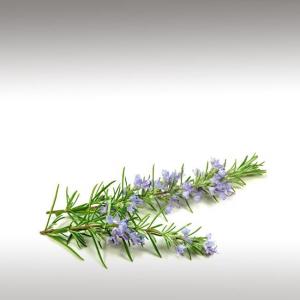
 Rosmarinus Officinalis, commonly known as Rosemary, is a woody,
perennial herb with fragrant, evergreen, needle-like leaves and white,
pink, purple, or blue flowers, native to the Mediterranean region.
Rosmarinus Officinalis, commonly known as Rosemary, is a woody,
perennial herb with fragrant, evergreen, needle-like leaves and white,
pink, purple, or blue flowers, native to the Mediterranean region.It is a member of the Mint family Lamiaceae, which includes many otherherbs. The name "Rosemary" derives from the Latin for "Dew" (Ros) and "Sea" (Marinus), or "Dew of the sea". The plant is also sometimes called Anthos, from the ancient Greek Rosmarinus meaning "Flower".
Submitted by OperaDreamhouse (March 14, 2014)
Beeswax (Cera Alba) ☸ Ingredients ☸ Base / General
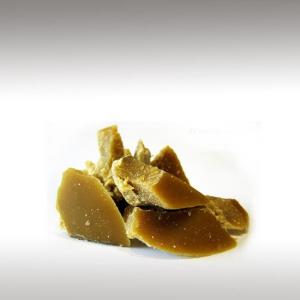
 Beeswax is a natural Wax produced in the Bee hive of Honey Bees of the genus Apis. It is mainly esters of fatty acids and various long-chain alcohols.
Beeswax is a natural Wax produced in the Bee hive of Honey Bees of the genus Apis. It is mainly esters of fatty acids and various long-chain alcohols.The Wax is formed by worker Bees, which secrete it from eight wax-producing mirror glands on the inner sides of the sternites (the ventral shield or plate of each segment of the body). The Wax of Honeycomb is nearly white, but becomes progressively more yellow or brown by incorporation of Pollen oils and Propolis.
1 kg Wax can be harvested from a colony with 30 - 70,000 bees. When freshly secreted, Beeswax is white and colorless.
Honey Bees use the Beeswax to build honeycomb cells in which their young are raised with honey and pollen cells being capped for storage. For thewax-making bees to secrete Wax, the ambient temperature in the hive must be 33 to 36 °C.
When beekeepers extract the Honey, they cut off the Wax caps from each honeycomb cell with an uncapping knife or machine. The Wax may further be clarified by heating in water. As with petroleum Waxes, it may be softened by dilution with vegetable oil to make it more workable at room temperature.
Candle-making has long involved the use of Beeswax, which is highly flammable, and this material traditionally was prescribed, for the making of the Paschal Candle or "Easter Candle". It is further recommended for the making of other candles used in the liturgy of the Roman Catholic Church. Beeswax is also the candle constituent of choice in the Orthodox Church.
Modeling Waxes can also use Beeswax as a component. Pure Beeswax can also be used as an organic surfboard Wax.
Beewax is very important in Eastern Europe eggs decoration art : it is used for writing, via resist dyeing, on Batik eggs (as in pysanky) and for making beaded eggs.
Chemical structure:
An approximate chemical formula for Beeswax is C15 H31 COOC30 H61.
Beeswax never goes bad and can be heated and reused.
The three main types of Beeswax products are yellow, white and Beeswax absolute. Yellow Beeswax is the crude product obtained from the honeycomb, White Beeswax is bleached Yellow Beeswax, and Beeswax absolute is Yellow Beeswax treated with alcohol. In food preparation, it is used as a coating for cheese; by sealing out the air, protection is given against spoilage.
Beeswax may also be used as a food additive E901, in small quantities acting as a (glazing agent), which serves to prevent water loss, or used to provide surface protection for some fruits.
Beeswax is also a common ingredient of natural chewing gum.
Submitted by OperaDreamhouse (March 14, 2014)
Champaca Distillate (Michelia Champaca) ☸ Herbal distillates ☸ Base / General
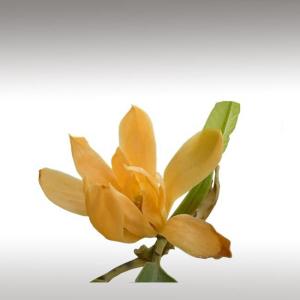
 It is best known for its strongly fragrant yellow or white flowers. It is, however, primarily cultivated for its timber, and is also used in urban landscaping. Its aril-covered seeds are highly attractive to birds. This species occurs in varying shades of cream to yellow-orange. In China, Magnolia champaca var. pubinervia is documented. Magnolia × alba is a hybrid cultivar of Magnolia champaca. In Thailand, there has been some purported man-made hybrids with other magnolia species including Magnolia liliifera and Magnolia coco.
It is best known for its strongly fragrant yellow or white flowers. It is, however, primarily cultivated for its timber, and is also used in urban landscaping. Its aril-covered seeds are highly attractive to birds. This species occurs in varying shades of cream to yellow-orange. In China, Magnolia champaca var. pubinervia is documented. Magnolia × alba is a hybrid cultivar of Magnolia champaca. In Thailand, there has been some purported man-made hybrids with other magnolia species including Magnolia liliifera and Magnolia coco.Submitted by OperaDreamhouse (March 13, 2014)
Jasmine (White Mallika) Distillate (Jasminum Sambac) ☸ Herbal distillates ☸ Base / General
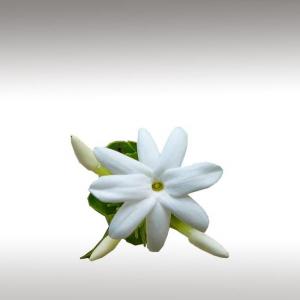

The flowers are also used for perfumes and for making tea. It is known as the Arabian Jasmine in English. It is the national flower of the Philippines, where it is known as Sampaguita. It is also one of the three national flowers of Indonesia, where it is known as Melati Putih.
Despite the English common name of "Arabian Jasmine", Jasminum Sambac is not originally native to Arabia. The habits of Jasminum Sambac support a native habitat of humid tropical climates and not the arid climates of the Middle East.
Despite the English common name of "Arabian Jasmine", Jasminum Sambac is not originally native to Arabia. The habits of Jasminum Sambac support a native habitat of humid tropical climates and not the arid climates of the Middle East.
Early Chinese records of the plant points to the origin of Jasminum Sambac as eastern South Asia and Southeast Asia. Jasminum Sambac (and nine other species of the genus) were spread into Arabia and Persia by man, where they were cultivated in gardens. From there, they were introduced to Europe where they were grown as ornamentals and were known under the common name "Sambac" in the 18th century.
White Mallika is not only an amazing flower, but also a complex, developed cultural and philosophical phenomenon.
Submitted by OperaDreamhouse (March 13, 2014)
Lavender Distillate (Lavandula Angustifolia) ☸ Herbal distillates ☸ Base / General
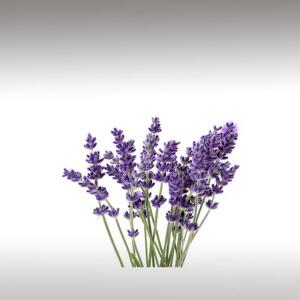

Organic Lavender Hydrosol smells slightly different from the herb and essential oil. It is lighter and somewhat earthier in fragrance and doesn't possess the camphorous note that many Lavender essential oils have.
Lavender (Lavandula Angustifolia) is a strongly aromatic shrub with pale green, narrow, linear leaves and violet - blue flowers. Native to the low mountains of the Mediterranean region, now is cultivated all over the world for its essential oil.
The influence of the time of distillation on the content and composition of the essential oil isolated from lavender (Lavandula Angustifolia) by steam distillation was investigated. The maximum essential oil percentage (2%) was obtained after 2 hours of distillation, while the minimum essential oil percentage (1%) was obtained after 40 minutes of distillation.
Lavender oil is easily extracted from the flower heads using steam distillation. The best effect of distillation time on Lavender essential oil yield and composition when extracted from dried flowers.
If the time of distillation is too short, higher boiling point compounds may be lacking. When the time of distillation is too long, the oil may have unpleasant smell.
According to Pitman, nearly 75% of the total oil yield comes in the first 25 minutes of distillation, to give a commercial grade Lavender oil. Obtaining of the othermolecules, like coumarins, take another 50 - 80 minutes of distillation.
Steam distillation is a simple method of universal application and the inexpen - sive equipment. Unfortunately, during this process molecular rearrangements, hydrolysisof double bonds and de - esterification of esters to alcohols and carbo - xylic acids may occurs.
In case of Lavender oil, the levels of linalool and linalyl ace - tate are key determinants of the overall fragrance of the oil. Linalool is sweeter, but the odour of its ester, linalyl acetate is more refreshing. The linalool to linalyl acetate ratio may change in different distillation times and may affect the final odour of the oil.
According to literature data, in high quality Lavender oil, the ratio of linalyl acetate to linalool should be higher than one. Commercially produced Lavender oil is often distilled for only 15 minutes at a very high temperature and under very high pressure. Although the oil is easily sold, it is of very poor quality. In order to make it smell like the genuine plantfragrance, synthetic linalyl acetate is often added.
Distillation is conducted by boiling the water beneath the charge with steam brought from a boiler to a coil, the top of which must be at least 1 foot beneath the bottom of the charge chamber. The oil flow from the condenser must be watched for, and complete distillation of the charge usually takes about six hours from commencement of the flow.
The yield of the oil is apt to vary considerably from season to season, as the age of the bushes and the weather will affect both the quantity and quality of the product. The amount of sunlight in the weeks before distillation has a great influence: the best oil is obtained after a hot, droughty season, heavy rains detract from the yield.
The Distillate should be left for several months to become quite clear and transparent before it is offered for sale. At Hitchin, it has been calculated that 60 lb. of good flowers will yield on the average 16 fluid ounces of oil.
Growers not doing their own distilling, but preparing the flowers dry for market, should spread the stalks out in the open, on trays or sieves, in a cool, shady position, out of the sun, so that they may dry slowly. The trays should be raised a few feet from the ground, to ensure a warm current of air, and the stems must not be allowed to touch, or the flowers will be spoilt by the moist heat engendered. They must be taken indoors before there is any risk of them getting damp either by dew or showers. When dry, they should be stored in a dry place and made up into bundles. The flowers may also be stripped from the stalks and dried by a moderate heat. They have a greyish-blue colour when dried.
Lavender Hydrosol can be used directly on the skin. It can also be used as part or all of the water phase for nonionic or cationic creams and lotions, as well as in room and body sprays. This is is a naturally preserved product, but it is for external use only.
The flowers and leaves are used as an herbal medicine, either in the form of Lavender oil or as an herbal tea. The flowers are also used as a culinary herb, most often as part of the French herb blend called herbes de Provence.
Submitted by OperaDreamhouse (March 13, 2014)
Roman Chamomile Distillate (Chamaemelum Nobile) ☸ Herbal distillates ☸ Base / General
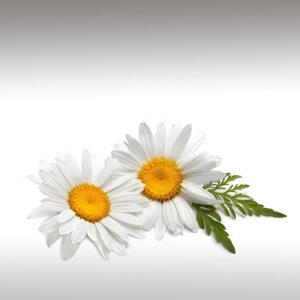
 Chamaemelum nobile, commonly known as chamomile (also spelled camomile),
Roman chamomile, English chamomile, garden chamomile, ground apple, low
chamomile, or whig plant, is a low perennial plant found in dry fields
and around gardens and cultivated grounds in Europe, North America, and
Argentina. C. nobile is, along with Matricaria chamomilla, an important
source of the herbal product known as chamomile.
Chamaemelum nobile, commonly known as chamomile (also spelled camomile),
Roman chamomile, English chamomile, garden chamomile, ground apple, low
chamomile, or whig plant, is a low perennial plant found in dry fields
and around gardens and cultivated grounds in Europe, North America, and
Argentina. C. nobile is, along with Matricaria chamomilla, an important
source of the herbal product known as chamomile.
The plant is used to flavor foods, in herbal teas, perfumes, and cosmetics. It is used to make a rinse for blonde hair, and is popular in aromatherapy; its practitioners believe it to be a calming agent to reduce stress and aid in sleep.An organic food information site considers chamomile to be an antiseptic, antibiotic, disinfectant, bactericidal and vermifuge.Roman chamomile is not recommended for use during pregnancy as it can cause uterine contractions and miscarriage.
Submitted by OperaDreamhouse (March 13, 2014)
Damask Rose Distillate (Rosa Damascena) ☸ Herbal distillates ☸ Base / General
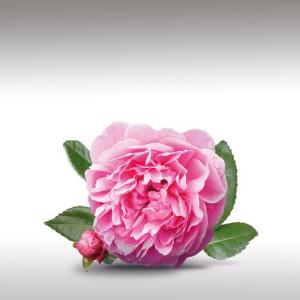

According to Indian legend, the palace gardens belonging to the Mughal Emperor Jahangir featured canals that flowed with Rose Water. One day, his favorite sultana requested that the foam that floated in the canals be removed. The foam gave off the most incomparablefragrance, and the sultana thought it was the most intoxicating scent she had ever smelled. Thus Rose Distillation was born.
Rosa Damascena, more commonly known as the Damask Rose, or sometimes as the Rose of Castile, is a Rose hybrid, derived from Rosa Gallica and Rosa Moschata. Further DNA analysis has shown that a third species, Rosa Fedtschenkoana, is associated with the Damask Rose.
Rosa Damascena is a cultivated flower, no longer found growing wild, and the history of just where it came from is varied, but generally understood as coming from the Middle East.
The Crusader Robert de Brie is sometimes given credit for bringing the Damask Rose from Syria to Europe sometime between 1254 and 1276. The name refers to Damascus, Syria a major city in the Middle Eastern region.
Rosa Damascena, more commonly known as the Damask Rose, or sometimes as the Rose of Castile, is a Rose hybrid, derived from Rosa Gallica and Rosa Moschata. Further DNA analysis has shown that a third species, Rosa Fedtschenkoana, is associated with the Damask Rose.
Rosa Damascena is a cultivated flower, no longer found growing wild, and the history of just where it came from is varied, but generally understood as coming from the Middle East.
The Crusader Robert de Brie is sometimes given credit for bringing the Damask Rose from Syria to Europe sometime between 1254 and 1276. The name refers to Damascus, Syria a major city in the Middle Eastern region.
Other stories say the Romans brought the Rose to England, and a third account says that the physician of Henry VIII gave him a Damask Rose, as a present, around 1540.
The Damask Rose is a deciduous shrub growing to 2,2 metres tall, the stems densely armed with stout, curved prickles and stiff bristles. The Roses are a light to moderate pink to light red. The relatively small flowers grow in groups. The bush has an informal shape.
Gathering the flowers is quite labor - intensive as it must be done by hand. There are about twenty to forty days per year when harvesting occurs, depending on the type of Rosa Damascena cultivation in the region. The Roses are gathered by hand and brought to a central location for steam distillation.
The largest producers of Rose oil from the different names all falling under the name Rosa Damascena are Bulgaria and Turkey. France and India also contribute significantly to the world market. Morocco, Tunisia and some other Middle Eastern countries have historically produced Rose oil, but their modern contribution is minimal.
The town of Kazanlak in Bulgaria was founded in 1420. It is assumed by most historians that the cultivation of the Kazanlak Rose began around that period. Kazanlak called the “Valley of Roses". The distillate from these Roses is sold as "Bulgarian Rose Oil”, and “Bulgarian Rose Otto”. A nearby valley provided the perfect environment for growing Roses, thereby establishing what would in later years become the finest Rose oil producing region in the world.
In Bulgaria, the rose blossoms of Rosa Damascena begin to bloom around the third week of May, and will continue for three or four weeks depending upon climatic conditions. The concentration of perfume and constituents is at its greatest just as the flowers develop into full bloom, it is at this point when it is best to harvest. The expanded flowers should be gathered before sunrise and with the calyx attached so as to gain the maximum amount of volatile oils.
In Bulgaria during the early 1900's, virtually all Rose oil was distilled on-site using direct-fire stills operated by the farmers. A suitable site would be chosen adjacent to the field and near a stream and the apparatus would be set up.
Bulgaria region distillation method:
Once the Rose petals are gathered for the day, they are laid out for a group of women to sift through, taking out any leaves, ensuring that only the Rose Petals go into the stills. Once the correct amount of Rose Petals is placed into the still, pure mountain stream Water is added, three parts by weight of Water to one part of Roses. Then the mixture is gently boiled for four hours as steam is passed off and condensed into another container, as Rose Water.
Modern stills are made of copper and are heated with an open wood fire from below. The Roses can not be distilled in the usual way by directly injecting steam, because the petals compact to form a large mass that the steam can not penetrate. Therefore the distillation techniques have been refined in various ways to overcome this problem.
During distillation a large amount of oil is absorbed into the distillation Water, and this is known as the "First Water". The Rose oil must be recovered from this water to produce an acceptable yield, and this is achieved by skilfully re - distilling the water to separate the oil, a process known as cohobation.
The total yield of oil will depend upon several conditions: climate, the time of the harvest, condition of the flowers and the method of distillation. During the middle of the harvest period the yield is higher than at the beginning, and mild weather will result in a further increase in the oil produced.
On average, Rosa Damascena will yield 1 kilo of oil per 4,000 kilos of flowers using modern distillation processes.
For centuries, the Damascus Rose (Rosa Damascena) has been considered a symbol of beauty and love. The fragrance of the rose has been captured and preserved in the form of rose water by a method that can be traced back to ancient times in the Middle East, and later to the Indian subcontinent. A Persian scientist, Avicenna, is credited with the invention of the process for extracting rose water from rose petals in the early 11th century.
Rose Water preceded the discovery of rose oil and was used for centuries before the oil or "attar" was first produced.
The exact origin of Rose Water and Rose oil production was never recorded in history. However, the existence of Rose Water as far back as 1200 BC to the Mycenaean city of Pilos where it was traded commercially. The production of Rose Water was also a thriving industry in Shiraz in Persia. From 810 BC the province of Faristan in Persia was required to give an annual tribute of 30,000 bottles of Rose Water to the Caliph in Baghdad. At this time Faristan was the centre of global Rose Water production, exporting to China and throughout the Islamic world.
Today there are four main centres in the world where Roses are grown for the production of Rose Water and Rose oil. They are Kazanluk, known as "The Valley of Roses" in Bulgaria, Isparta in Turkey, Shiraz in Iran and Grasse in the South of France. Each of these regions has its own particular climate and process of distillation.
The Damask Rose is a deciduous shrub growing to 2,2 metres tall, the stems densely armed with stout, curved prickles and stiff bristles. The Roses are a light to moderate pink to light red. The relatively small flowers grow in groups. The bush has an informal shape.
Gathering the flowers is quite labor - intensive as it must be done by hand. There are about twenty to forty days per year when harvesting occurs, depending on the type of Rosa Damascena cultivation in the region. The Roses are gathered by hand and brought to a central location for steam distillation.
The largest producers of Rose oil from the different names all falling under the name Rosa Damascena are Bulgaria and Turkey. France and India also contribute significantly to the world market. Morocco, Tunisia and some other Middle Eastern countries have historically produced Rose oil, but their modern contribution is minimal.
The town of Kazanlak in Bulgaria was founded in 1420. It is assumed by most historians that the cultivation of the Kazanlak Rose began around that period. Kazanlak called the “Valley of Roses". The distillate from these Roses is sold as "Bulgarian Rose Oil”, and “Bulgarian Rose Otto”. A nearby valley provided the perfect environment for growing Roses, thereby establishing what would in later years become the finest Rose oil producing region in the world.
In Bulgaria, the rose blossoms of Rosa Damascena begin to bloom around the third week of May, and will continue for three or four weeks depending upon climatic conditions. The concentration of perfume and constituents is at its greatest just as the flowers develop into full bloom, it is at this point when it is best to harvest. The expanded flowers should be gathered before sunrise and with the calyx attached so as to gain the maximum amount of volatile oils.
In Bulgaria during the early 1900's, virtually all Rose oil was distilled on-site using direct-fire stills operated by the farmers. A suitable site would be chosen adjacent to the field and near a stream and the apparatus would be set up.
Bulgaria region distillation method:
Once the Rose petals are gathered for the day, they are laid out for a group of women to sift through, taking out any leaves, ensuring that only the Rose Petals go into the stills. Once the correct amount of Rose Petals is placed into the still, pure mountain stream Water is added, three parts by weight of Water to one part of Roses. Then the mixture is gently boiled for four hours as steam is passed off and condensed into another container, as Rose Water.
Modern stills are made of copper and are heated with an open wood fire from below. The Roses can not be distilled in the usual way by directly injecting steam, because the petals compact to form a large mass that the steam can not penetrate. Therefore the distillation techniques have been refined in various ways to overcome this problem.
During distillation a large amount of oil is absorbed into the distillation Water, and this is known as the "First Water". The Rose oil must be recovered from this water to produce an acceptable yield, and this is achieved by skilfully re - distilling the water to separate the oil, a process known as cohobation.
The total yield of oil will depend upon several conditions: climate, the time of the harvest, condition of the flowers and the method of distillation. During the middle of the harvest period the yield is higher than at the beginning, and mild weather will result in a further increase in the oil produced.
On average, Rosa Damascena will yield 1 kilo of oil per 4,000 kilos of flowers using modern distillation processes.
For centuries, the Damascus Rose (Rosa Damascena) has been considered a symbol of beauty and love. The fragrance of the rose has been captured and preserved in the form of rose water by a method that can be traced back to ancient times in the Middle East, and later to the Indian subcontinent. A Persian scientist, Avicenna, is credited with the invention of the process for extracting rose water from rose petals in the early 11th century.
Rose Water preceded the discovery of rose oil and was used for centuries before the oil or "attar" was first produced.
The exact origin of Rose Water and Rose oil production was never recorded in history. However, the existence of Rose Water as far back as 1200 BC to the Mycenaean city of Pilos where it was traded commercially. The production of Rose Water was also a thriving industry in Shiraz in Persia. From 810 BC the province of Faristan in Persia was required to give an annual tribute of 30,000 bottles of Rose Water to the Caliph in Baghdad. At this time Faristan was the centre of global Rose Water production, exporting to China and throughout the Islamic world.
Today there are four main centres in the world where Roses are grown for the production of Rose Water and Rose oil. They are Kazanluk, known as "The Valley of Roses" in Bulgaria, Isparta in Turkey, Shiraz in Iran and Grasse in the South of France. Each of these regions has its own particular climate and process of distillation.
Submitted by OperaDreamhouse (March 13, 2014)
Frankincense Distillate (Boswellia Serrata) ☸ Herbal distillates ☸ Base / General
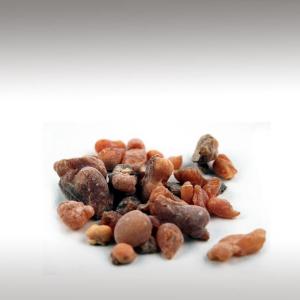
 Frankincense, also called Olibanum, is an aromatic resin obtained from
trees of the genus Boswellia, particularly Boswellia Sacra, Boswellia Carteri, Boswellia Thurifera, Boswellia Frereana and Boswellia Bhaw-Dajiana (Burseraceae). The English word is derived from Old French
"Franc Encens" and is used in incense and perfumes.
Frankincense, also called Olibanum, is an aromatic resin obtained from
trees of the genus Boswellia, particularly Boswellia Sacra, Boswellia Carteri, Boswellia Thurifera, Boswellia Frereana and Boswellia Bhaw-Dajiana (Burseraceae). The English word is derived from Old French
"Franc Encens" and is used in incense and perfumes.There are four main species of Boswellia that produce true Frankincense and resin from each of the four is available in various grades. The grades depend on the time of harvesting. The resin is hand-sorted for quality. Frankincense can also be found in the Bible as one of the three gifts the wise men gave to the young child Jesus.
This powerful Hydrosol is used in skin care, meditation, energetics work, fragrance blends, and other aromatherapy preparations. Frankincense Distillate has a fresh scent that is resinous and sweet with woody undertones. It has aroma notes that are similar to both the resin tears and the essential oil.
Blending possibilities are endless depending on your intended use. Aromatically, this Hydrosol will blend well with blood orange, lavandin, douglas fir, and neroli hydrosols. It also makes a wonderful base for citrus, resin, flower, and woodsy tree essential oils.
Submitted by OperaDreamhouse (March 13, 2014)
☸ ☸ Base / General
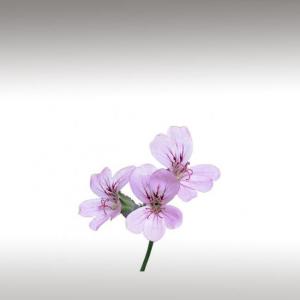

The true Pelargonium graveolens is an uncommon species in the
Pelargonium genus, which is native to South Africa, Zimbabwe and
Mozambique, while the plants cultivated under this name differ from the
wild specimens and are of hybrid origin.
Often called a geranium, as it falls within the plant family Geraniaceae, and was previously categorised under the same genus. The common Pelargonium 'Graveolens' or Pelargonium 'Rosat' has great importance in the perfume industry. It is cultivated on a large scale and its foliage is distilled for its scent. Pelargonium 'Graveolens' cultivars have a wide variety of smells, including rose, citrus, mint, coconut and nutmeg, as well as various fruits. However, the most commercially important varieties are those with rose scents.
Often called a geranium, as it falls within the plant family Geraniaceae, and was previously categorised under the same genus. The common Pelargonium 'Graveolens' or Pelargonium 'Rosat' has great importance in the perfume industry. It is cultivated on a large scale and its foliage is distilled for its scent. Pelargonium 'Graveolens' cultivars have a wide variety of smells, including rose, citrus, mint, coconut and nutmeg, as well as various fruits. However, the most commercially important varieties are those with rose scents.
Submitted by OperaDreamhouse (March 13, 2014)
Page 44 of 48

